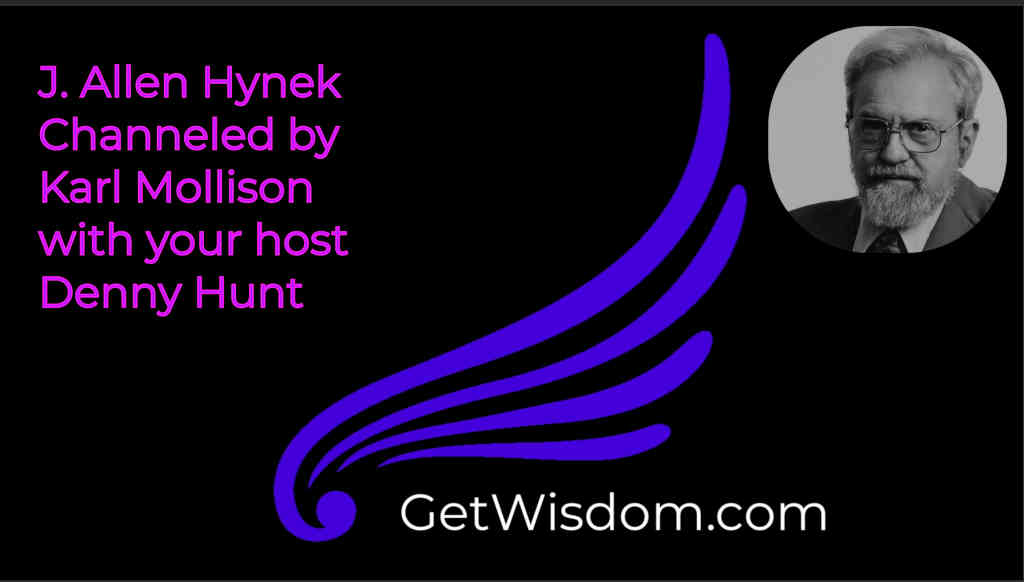
J. Allen Hynek Channeled by Karl Mollison 17March2017
Dr. Josef Allen Hynek (May 1, 1910 – April 27, 1986) was an American astronomer, professor, and ufologist. He is perhaps best remembered for his UFO research. Hynek acted as scientific adviser to UFO studies undertaken by the U.S. Air Force under three consecutive projects: Project Sign (1947–1949), Project Grudge (1949–1952), and Project Blue Book (1952–1969).
Hynek was born in Chicago to Czech parents. In 1931, Hynek received a B.S. from the University of Chicago. In 1935, he completed his PhD. in astrophysics at Yerkes Observatory. He joined the Department of Physics and Astronomy at Ohio State University in 1936. He specialized in the study of stellar evolution and in the identification of spectroscopic binary stars.
During World War II, Hynek was a civilian scientist at the Johns Hopkins Applied Physics Laboratory, where he helped to develop the United States Navy’s radio proximity fuse.
After the war, Hynek returned to the Department of Physics and Astronomy at Ohio State, rising to full professor in 1950. In 1953, Hynek submitted a report on the fluctuations in the brightness and color of starlight and daylight, with an emphasis on daytime observations.
In 1956, he left to join Professor Fred Whipple, the Harvard astronomer, at the Smithsonian Astrophysical Observatory, which had combined with the Harvard Observatory at Harvard. Hynek had the assignment of directing the tracking of an American space satellite, a project for the International Geophysical Year in 1956 and thereafter. In addition to over 200 teams of amateur scientists around the world that were part of Operation Moonwatch, there were also 12 photographic Baker-Nunn stations. A special camera was devised for the task and a prototype was built and tested and then stripped apart again when, on Oct. 4, 1957, the Soviet Union launched its first satellite, Sputnik 1.
After completing his work on the satellite program, Hynek went back to teaching, taking the position of professor and chairman of the astronomy department at Northwestern University in 1960.
Hynek’s true views on UFOs were still unknown to the public when the astronomer, now teaching at Northwestern University, first met Jacques Vallee in the fall of 1963. Taking a job as a computer programmer at Northwestern, Vallee became a close friend of Hynek and soon they formed a UFO discussion group.
The astronomer would eventually nickname this group “the Invisible College” (Vallee 1996, 270)—a term first used by the Rosicrucians in the early 1600s.
Vallee began prodding Hynek to break with the Air Force and publicly admit that the UFO phenomenon was real and worthy of serious scientific investigation. Project Blue Book’s longtime scientific consultant—still known as a staunch UFO debunker—stubbornly resisted this advice (Vallee 1996, 80–94).
In later years he conducted his own independent UFO research, developing the “Close Encounter” classification system.
He is widely considered the father of the concept of scientific analysis both of reports and especially of trace evidence purportedly left by UFOs.
Source https://en.wikipedia.org/wiki/J._Allen_Hynek
https://skepticalinquirer.org/2013/01/the_secret_life_of_j_allen_hynek/

